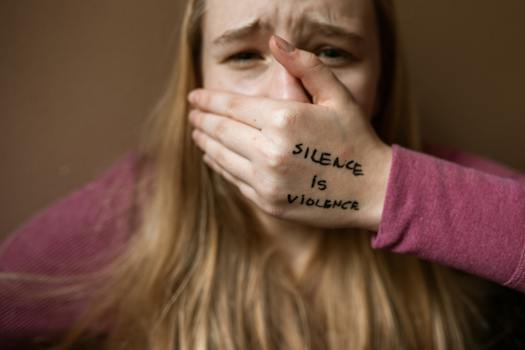

-
Table of Contents
"Healing from Trauma: Embrace the Journey to Reclaim Your Inner Strength."
Introduction
Healing from trauma is a complex and individualized process that involves addressing the emotional, psychological, and physical impacts of a traumatic experience. Trauma can result from a wide range of events, such as accidents, abuse, natural disasters, or witnessing violence. The journey towards healing often involves seeking professional help, building a support network, practicing self-care, and engaging in various therapeutic techniques. It is important to remember that healing is a gradual and ongoing process, and each person's experience and timeline may differ.
Understanding the Impact of Trauma on Mental Health
Understanding the Impact of Trauma on Mental Health
Trauma is a deeply distressing or disturbing experience that can have a profound impact on an individual's mental health. Whether it is a single event or a series of events, trauma can leave lasting emotional scars that affect a person's thoughts, feelings, and behaviors. Understanding the impact of trauma on mental health is crucial in order to provide appropriate support and facilitate healing.
One of the most common effects of trauma is the development of post-traumatic stress disorder (PTSD). PTSD is a mental health condition that can occur after experiencing or witnessing a traumatic event. Individuals with PTSD often experience intrusive thoughts, nightmares, and flashbacks related to the traumatic event. They may also exhibit avoidance behaviors, such as avoiding places or activities that remind them of the trauma. Additionally, individuals with PTSD may have difficulty sleeping, experience heightened anxiety, and have a diminished interest in activities they once enjoyed.
Trauma can also lead to the development of other mental health disorders, such as depression and anxiety. The emotional distress caused by trauma can disrupt an individual's ability to regulate their emotions, leading to feelings of sadness, hopelessness, and a loss of interest in life. Anxiety is also common, as individuals may constantly feel on edge, have difficulty concentrating, and experience panic attacks. These mental health disorders can significantly impact a person's daily functioning and overall quality of life.
Furthermore, trauma can have a profound impact on an individual's sense of self and their relationships with others. Many individuals who have experienced trauma struggle with feelings of shame, guilt, and low self-esteem. They may blame themselves for the traumatic event or feel a sense of worthlessness. These negative beliefs about oneself can hinder the healing process and perpetuate a cycle of self-destructive behaviors.
Trauma can also disrupt an individual's ability to form and maintain healthy relationships. Trust issues, fear of intimacy, and difficulties with emotional regulation can make it challenging for trauma survivors to establish and maintain meaningful connections with others. This isolation can further exacerbate feelings of loneliness and contribute to the development of mental health disorders.
It is important to recognize that the impact of trauma on mental health is not limited to the individual who experienced the traumatic event. Family members and loved ones can also be affected by the trauma, experiencing their own emotional distress and challenges in supporting the survivor. Understanding the ripple effect of trauma can help foster empathy and provide a more comprehensive approach to healing.
In conclusion, trauma has a profound impact on an individual's mental health. It can lead to the development of mental health disorders such as PTSD, depression, and anxiety. Trauma can also disrupt an individual's sense of self and their ability to form and maintain healthy relationships. Recognizing the impact of trauma is crucial in order to provide appropriate support and facilitate healing. By understanding the far-reaching effects of trauma, we can work towards creating a more compassionate and supportive environment for survivors.
Effective Strategies for Healing Trauma

Healing from trauma is a complex and deeply personal journey that requires time, patience, and the implementation of effective strategies. Trauma can have a profound impact on an individual's mental, emotional, and physical well-being, often leaving them feeling overwhelmed and disconnected from themselves and others. However, with the right tools and support, it is possible to heal and reclaim a sense of wholeness and resilience.
One of the most effective strategies for healing trauma is therapy. Seeking professional help from a trained therapist can provide a safe and supportive space to explore and process the traumatic experiences. Therapists utilize various evidence-based approaches such as cognitive-behavioral therapy (CBT), eye movement desensitization and reprocessing (EMDR), and somatic experiencing to help individuals work through their trauma. These therapeutic modalities aim to address the underlying beliefs, emotions, and physical sensations associated with the trauma, facilitating healing and integration.
In addition to therapy, self-care practices play a crucial role in the healing process. Engaging in activities that promote relaxation, self-compassion, and self-expression can help individuals reconnect with their bodies and emotions. Mindfulness practices, such as meditation and deep breathing exercises, can be particularly beneficial in grounding oneself and reducing anxiety. Engaging in creative outlets, such as art, music, or writing, can provide a means of self-expression and processing emotions that may be difficult to verbalize.
Building a strong support network is another essential strategy for healing trauma. Surrounding oneself with understanding and empathetic individuals can provide a sense of validation and safety. Support can come from friends, family members, support groups, or online communities. Sharing experiences and feelings with others who have gone through similar traumas can foster a sense of belonging and reduce feelings of isolation. It is important to remember that healing is not a linear process, and having a support system can provide the necessary encouragement and reassurance during challenging times.
Engaging in physical activities can also be an effective strategy for healing trauma. Exercise has been shown to release endorphins, which are natural mood boosters, and reduce symptoms of anxiety and depression. Engaging in activities such as yoga, running, or dancing can help individuals reconnect with their bodies and release stored tension. Additionally, physical activities can provide a sense of empowerment and control, which can be particularly beneficial for individuals who have experienced trauma.
Lastly, practicing self-compassion and patience is crucial throughout the healing journey. Healing from trauma takes time, and it is important to acknowledge and honor one's own pace. It is common for individuals to experience setbacks or triggers along the way, and it is essential to approach these challenges with self-compassion and understanding. Celebrating small victories and acknowledging progress, no matter how small, can help individuals stay motivated and committed to their healing journey.
In conclusion, healing from trauma requires the implementation of effective strategies that address the emotional, mental, and physical aspects of the individual's well-being. Therapy, self-care practices, building a support network, engaging in physical activities, and practicing self-compassion are all essential components of the healing process. It is important to remember that healing is a unique and personal journey, and what works for one person may not work for another. By exploring and implementing these strategies, individuals can begin to heal, reclaim their lives, and cultivate resilience in the face of trauma.
Building Resilience and Moving Forward After Trauma
Healing from Trauma
Building Resilience and Moving Forward After Trauma
Trauma can have a profound impact on an individual's life, leaving them feeling overwhelmed, helpless, and stuck in a cycle of pain. However, it is important to remember that healing from trauma is possible. With the right support and strategies, individuals can build resilience and move forward towards a brighter future.
One of the first steps in healing from trauma is acknowledging and accepting the impact it has had on your life. Trauma can manifest in various ways, such as flashbacks, nightmares, or a constant state of hypervigilance. By recognizing these symptoms and understanding that they are a normal response to an abnormal event, individuals can begin to validate their experiences and take the necessary steps towards healing.
Seeking professional help is crucial in the healing process. Trauma therapists are trained to provide a safe and supportive environment where individuals can explore their experiences and emotions. Through various therapeutic techniques, such as cognitive-behavioral therapy or eye movement desensitization and reprocessing, individuals can learn to reframe their thoughts, process their emotions, and develop healthy coping mechanisms.
In addition to therapy, building a strong support system is essential. Surrounding yourself with understanding and empathetic individuals can provide a sense of validation and comfort. Friends, family, or support groups can offer a listening ear, a shoulder to lean on, and a sense of belonging. Sharing your story with others who have experienced similar traumas can be incredibly healing, as it helps to break the isolation and shame often associated with trauma.
Self-care is another crucial aspect of healing from trauma. Engaging in activities that bring joy and relaxation can help individuals reconnect with themselves and regain a sense of control. This can include practicing mindfulness or meditation, engaging in physical exercise, or pursuing creative outlets such as art or writing. Taking care of your physical health by eating well, getting enough sleep, and avoiding substances that may exacerbate symptoms is also important.
Building resilience is a key component of healing from trauma. Resilience refers to the ability to bounce back from adversity and adapt to challenging circumstances. Developing resilience involves cultivating a positive mindset, setting realistic goals, and practicing self-compassion. It is important to remember that healing takes time and that setbacks are a normal part of the process. By focusing on small victories and celebrating progress, individuals can build resilience and maintain a hopeful outlook.
Moving forward after trauma also involves addressing any lingering feelings of guilt or shame. It is common for survivors to blame themselves for the traumatic event or feel a sense of shame for their reactions. However, it is important to recognize that trauma is never the fault of the individual and that everyone copes differently. Letting go of self-blame and forgiving oneself is a crucial step towards healing and moving forward.
Finally, finding meaning and purpose in life can be a powerful catalyst for healing. Engaging in activities that align with your values and passions can provide a sense of fulfillment and help individuals regain a sense of identity. This can include volunteering, pursuing hobbies, or setting new goals for the future. By focusing on personal growth and finding meaning in the aftermath of trauma, individuals can create a new narrative for themselves and move forward with hope and resilience.
In conclusion, healing from trauma is a journey that requires time, support, and self-compassion. By acknowledging the impact of trauma, seeking professional help, building a support system, practicing self-care, and cultivating resilience, individuals can move forward towards a brighter future. Remember, healing is possible, and you are not alone.
Q&A
1. What is trauma healing?
Trauma healing refers to the process of addressing and resolving the emotional, psychological, and physical effects of a traumatic experience.
2. What are some common approaches to healing from trauma?
Common approaches to healing from trauma include therapy (such as cognitive-behavioral therapy or eye movement desensitization and reprocessing), support groups, medication, mindfulness practices, and self-care strategies.
3. How long does it take to heal from trauma?
The healing process from trauma varies for each individual and can take different lengths of time. It depends on various factors, including the severity of the trauma, individual resilience, available support systems, and the effectiveness of treatment approaches.
Conclusion
In conclusion, healing from trauma is a complex and individualized process that requires time, support, and self-care. It involves acknowledging and processing the traumatic experiences, seeking professional help if needed, and engaging in various therapeutic techniques and coping strategies. While the journey may be challenging, with patience and resilience, individuals can gradually regain their sense of safety, trust, and well-being.












